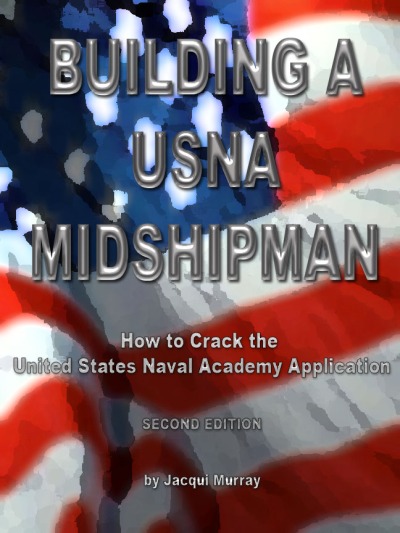 If you read the freshman year critical skills post, you know this is the fifth. We’ve covered:
If you read the freshman year critical skills post, you know this is the fifth. We’ve covered:
If you’re an honors student taking AP and IB classes, How to think sounds easy. That’s what you do all day. Take the hardest classes and get good grades.
That’s not what I’m talking about. Can you take a new situation, without teacher direction, without input from smarter friends, and come up with a plan of action, a solution, an analysis? Consider: in class, you read the textbook, listen to the teacher lecture, break into groups to discuss, write research papers, make videos, present to the class. You’re used to these proofs that you ‘think’. But what’s their purpose? Not the A you earned because you did it well. Little about success in life relates to the A you got on a calculus paper or the ten-page analysis you submitted of Hemingway’s A Farewell to Arms.
What your teacher wants you to do is think. Engage your brain, make connections, use the creativity you may have shelved in kindergarten. The way you do this uniquely human skill requires all of the activities your teacher has been encouraging you to do, but on a conscious level. You need to understand what it is you are doing. Next time you’re studying for class, do the following:
- When you’re reading, look up words you don’t understand. Make connections to what you’re learning elsewhere. Never read on auto-pilot. Be an active reader.
- Indulge your interest in topics tweaked by what you read. Take a few minutes–you can spare it–and Google it.
- Listen to other people’s thoughts on a subject. Don’t just pay attention to the choir of those who agree with you. Solicit the opinions of those who disagree. How do they support their premise? What are the facts they rely on to arrive at a decision different from yours? Gather all the evidence and modify or reinforce your thinking.
- Don’t be afraid to modify your opinions. That’s an open mind. If your thinking isn’t fluid, you are probably only listening to those who agree with you.
- Don’t be intimidated by the opposition. If you’re applying to the Naval Academy, you are probably more conservative than liberal, more patriotic than international. The education environment is generally a liberal pool of ideas. This is perfect for you, as a future leader. If you can’t support your opinion in an AP Economics class against the hordes who disagree, you probably haven’t thought it through enough.
- Keep your thinking simple. If it’s too complex for most people to understand, it’s too complex. Consider: The average IQ is around 100. The average reading level is eight grade with 20% reading below fifth grade. That doesn’t mean, talk down to people. It means: Consider your audience when you present your thinking. Keep it so most people will understand. That’s your key to getting their support.
If you do all of these, you create a habit for learning that is applicable to not just school, but your career in the Navy and life in general. You become the person who knows a little bit about everything, who can chat with anyone because you understand the connections between what they’re discussing and other topics you’ve read about. You have an outside-the-box solution to recalcitrant problems that no one else can solve. You’re the one who seems to have all the luck.
Jacqui Murray is the author of the popular Building a Midshipman, the story of her daughter’s journey from high school to United States Naval Academy. She is webmaster for six blogs, an Amazon Vine Voice book reviewer, a tech columnist for TeachHUB and Examiner.com, Editorial Review Board member for ISTE’s Journal for Computing Teachers, and freelance journalist on tech ed topics. Currently, she’s editing a thriller for her agent that should be out to publishers this summer.





































[…] How to think […]
LikeLike
By: September To Do List for USNA Applicants | USNA or Bust! on 09/01/2014
at 00:11
[…] How to think […]
LikeLike
By: October To Do List for USNA Applicants | USNA or Bust! on 09/29/2014
at 00:50
[…] How to think […]
LikeLike
By: November To Do List for USNA Applicants | USNA or Bust! on 11/03/2014
at 00:53
[…] How to think […]
LikeLike
By: December To Do List for USNA Applicants | USNA or Bust! on 12/01/2014
at 00:51
[…] How to think […]
LikeLike
By: January To Do List for USNA Applicants | USNA or Bust! on 01/05/2015
at 00:59
[…] How to think […]
LikeLike
By: February To Do List For Military Academy Applicants | USNA or Bust! on 02/09/2015
at 00:57
[…] How to think […]
LikeLike
By: March To Do List for USNA Applicants | USNA or Bust! on 03/02/2015
at 00:08
[…] How to think […]
LikeLike
By: April To Do List for USNA Applicants | USNA or Bust! on 04/01/2015
at 00:09
[…] How to think […]
LikeLike
By: May To Do List for USNA Applicants | USNA or Bust! on 05/01/2015
at 00:10
[…] How to think […]
LikeLike
By: June To Do List for USNA Applicants | USNA or Bust! on 06/01/2015
at 00:09
[…] How to think […]
LikeLike
By: July To Do List for USNA Applicants | USNA or Bust! on 07/01/2015
at 00:10
[…] How to think […]
LikeLike
By: August To Do List for USNA Applicants | USNA or Bust! on 08/01/2015
at 00:11
[…] How to think […]
LikeLike
By: Five Must-Do Skills to Accomplish During High School | USNA or Bust! on 01/18/2016
at 00:22
[…] How to think […]
LikeLike
By: January To Do List for Future USNA Mids | USNA or Bust! on 01/02/2017
at 00:40
[…] How to think […]
LikeLike
By: February To Do List for USNA Applicants | USNA or Bust! on 02/01/2019
at 00:54
[…] How to think […]
LikeLike
By: February To Do List for USNA Applicants update | USNA or Bust! on 02/02/2022
at 02:21
[…] How to think […]
LikeLike
By: May To Do List for USNA Applicants update | USNA or Bust! on 05/02/2022
at 02:22
[…] How to think […]
LikeLike
By: June To Do List for USNA Applicants update | USNA or Bust! on 06/02/2022
at 02:20
[…] How to think […]
LikeLike
By: July To Do List for USNA Applicants update | USNA or Bust! on 07/02/2022
at 02:22
[…] How to think […]
LikeLike
By: August To Do List for USNA Applicants update | USNA or Bust! on 08/02/2022
at 02:21
[…] How to think […]
LikeLike
By: October ToDo for USNA Applicants | USNA or Bust! on 10/02/2022
at 02:20
[…] How to think […]
LikeLike
By: November Checklist for USNA Applicants | USNA or Bust! on 11/02/2022
at 02:24
[…] How to think […]
LikeLike
By: January ToDo for USNA Applicants | USNA or Bust! on 01/02/2023
at 17:30
[…] How to think […]
LikeLike
By: January ToDo for USNA Applicants update | USNA or Bust! on 01/03/2024
at 00:18
[…] How to think […]
LikeLike
By: March To Do List for USNA Applicants update | USNA or Bust! on 03/01/2024
at 17:16
[…] How to think […]
LikeLike
By: April To Do List for USNA Applicants update | USNA or Bust! on 04/01/2024
at 17:24